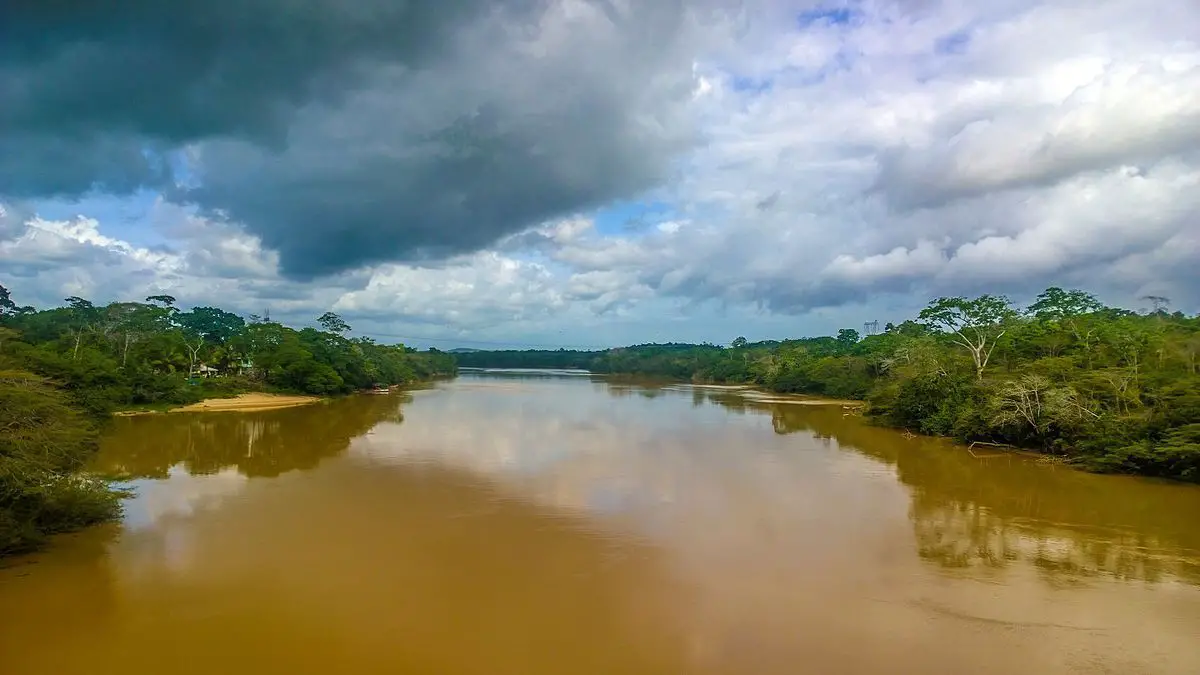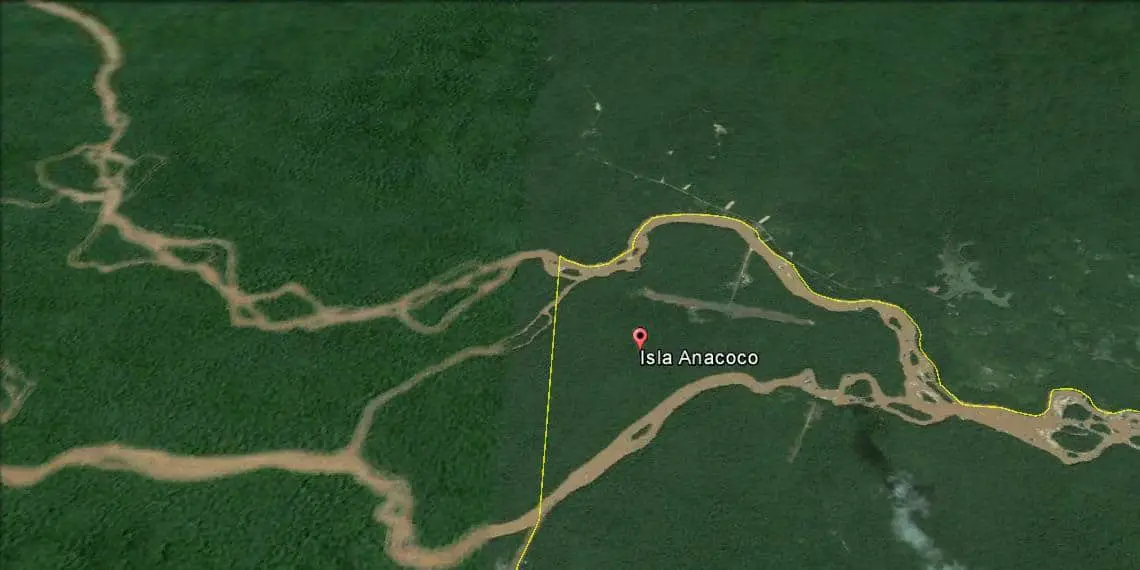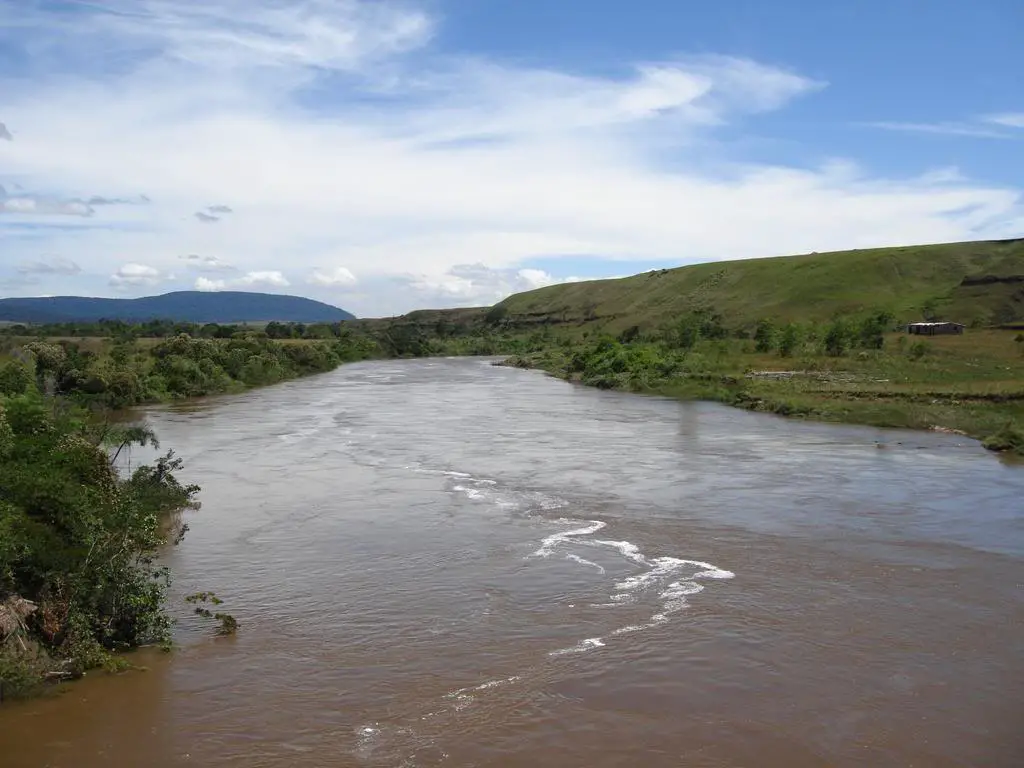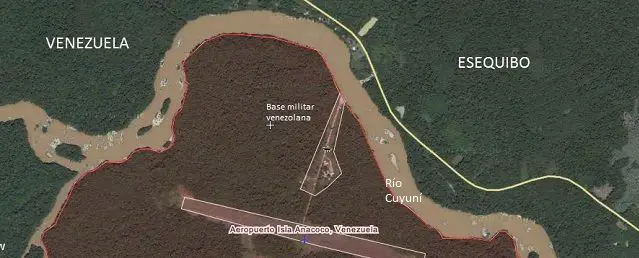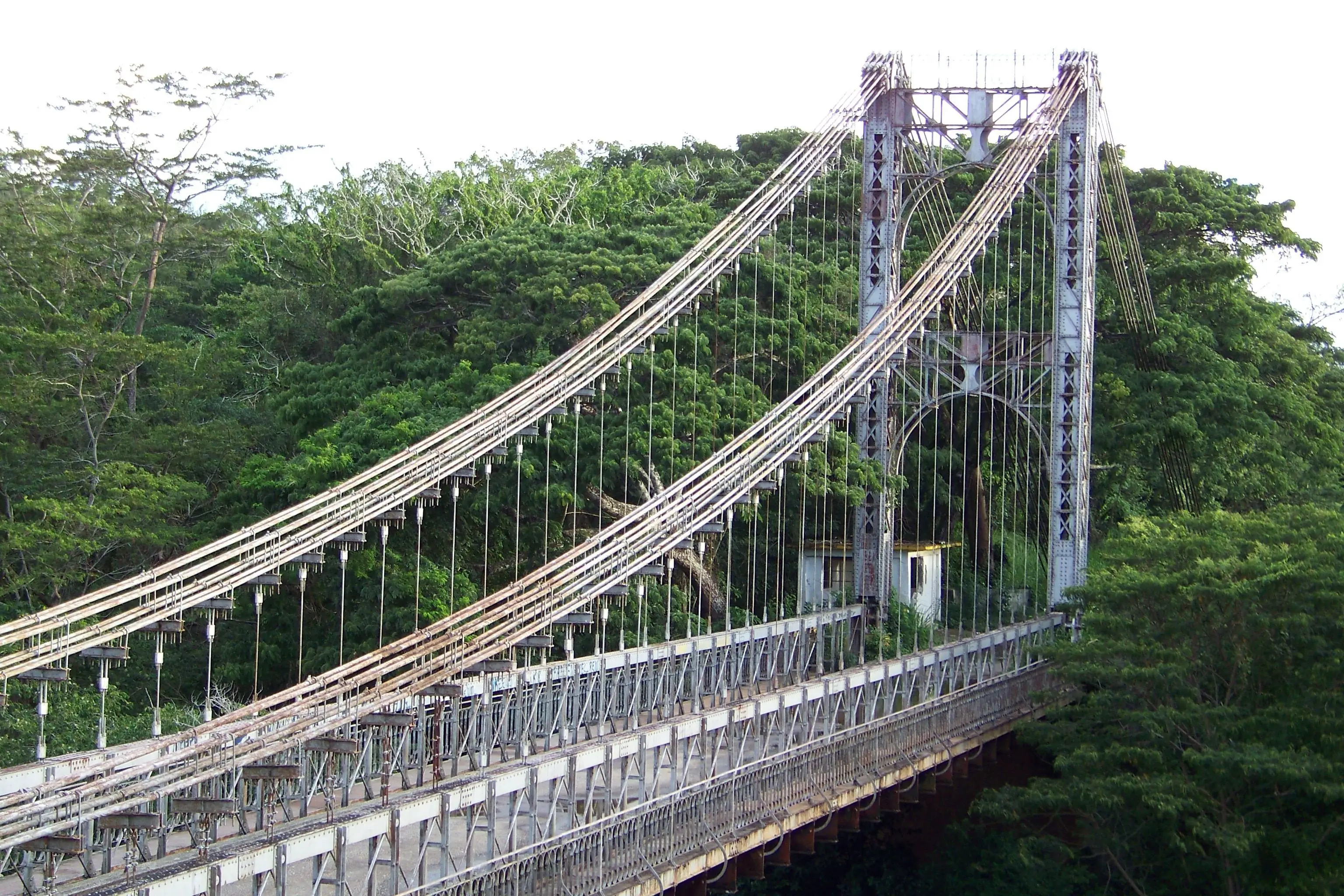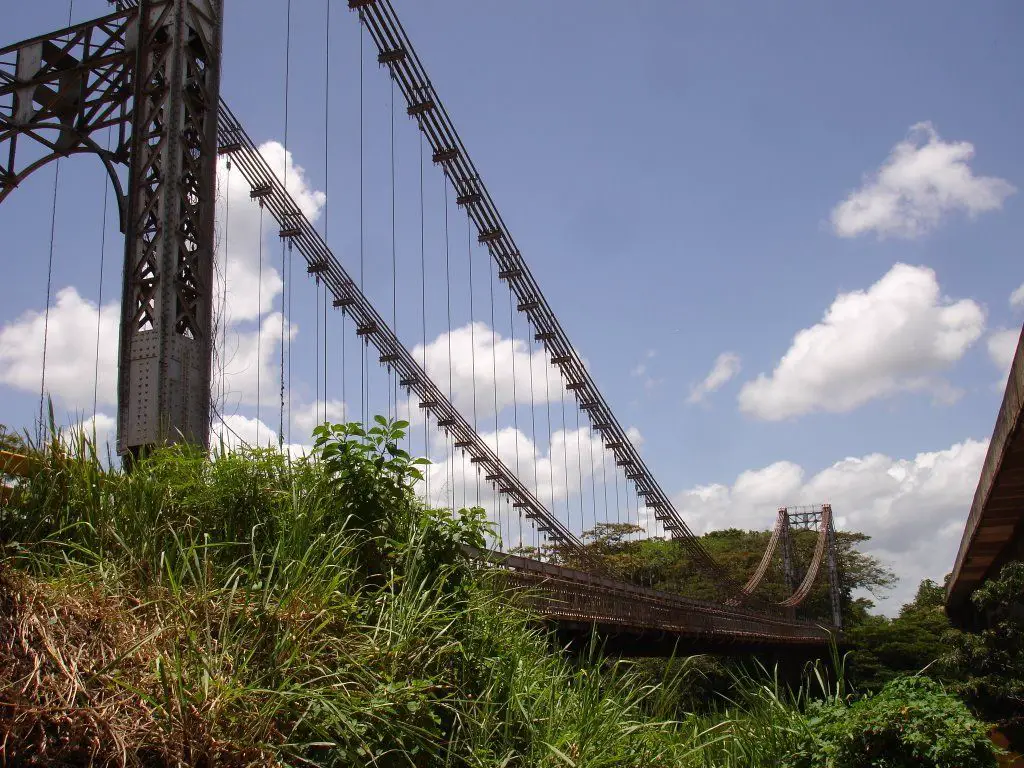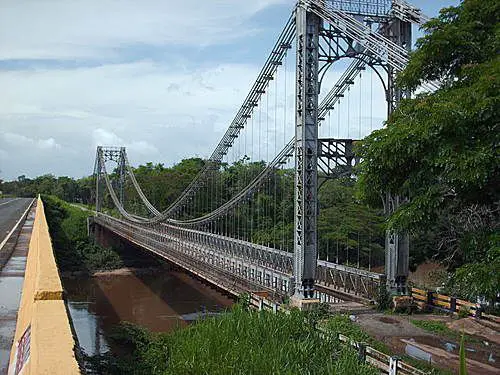The Cuyuni River, in the Bolivar state of Venezuela, is a South American river, a tributary of the Ezequibo, and a source of alluvial gold. It is very wide and has a suspension bridge across it (although it is currently out of order).
Characteristics and location of the Cuyuni River basin
The Cuyuni River forms the border between Venezuela and Guyana for much of its course. It flows for 618 kilometres from west to east, starting at El Dorado in the municipality of Sifontes.
In its long course, the Cuyuni River has an arm that forms the island of Anacoco, on one side of its main channel, and rejoins it to reach the area that Guyana considers the border with Venezuela, although Venezuela claims that the border is right on the middle line of the Ezequibo River.
In 1966, Venezuela occupied the island of Anacoco, claiming that it was outside the disputed area because the island was formed after the main branch of the main channel, although Guyana claims that half of the island belongs to the disputed area with Guyana Ezequiba. Nevertheless, the island is currently under Venezuelan rule.
The Cuyuni River has a catchment area of 50,347 square kilometres, of which approximately 12,192 square kilometres is in Guyana.
On the Venezuelan side it is known by a different name (Yurauri). On the left side of the river it hosts the Botanamo as well as the Venamo. The Rio Cuyuni feeds the Rio Ezequibo and ends on the Atlantic slope, unlike many rivers that end directly at the sea, such as the great Rio Manzanares.
In the Ezequiba Guayana section of the Cuyuni River is the Kamaria hydroelectric plant.
It is known as the Cuyuni Incident, which took place on 2 January 1895, an event named after General Domino Antonio Sifontes.
On that day, an armed confrontation took place on the Cuyuni River between the British and the Venezuelans over a territorial dispute, in which the Venezuelans, under the command of General Sifontes, were victorious.
In the early hours of the morning, the British police, under the command of Inspector Barnes, occupied an unmanned Venezuelan military post on the left bank of the river, where the British had flown the British flag during the day.
Captain Andres Dominguez retook the post and took Inspector Barnes and his men prisoner, increasing tensions between the two countries at a time of major internal crisis in Venezuela.
The bridge that has crossed the Cuyuni River since the 1920s has its own history. The most popular version is that it was commissioned by Peru from Germany to cross the Jequetepeque River and was named the Simón Bolívar Bridge.
The captain of the ship that transported it arrived at the Venezuelan coast in the middle of a confusion, where he unloaded the framework only to realise the mistake he had made and, faced with the cost of re-shipping everything, decided to offer it to the Venezuelan government at a lower price.
At the time, our president, General Gómez, thought it was a good acquisition and bought it. Another version is that the ship ran aground in the Orinoco delta, the bridge was auctioned off before everything was lost in the river, and then it was reassembled to cross the Cuyuni River.
Another version of the acquisition of the bridge is that on 19 December 1933, when General Gómez had been in power for 25 years, the bridge over the Guárico River was built, but as it was a one-lane bridge, it was too small for the heavy traffic in Guárico.
For this reason, in 1956, during the government of Marcos Pérez Jiménez, it was decided to move it by land to El Dorado, in the municipality of Sifontes, in the state of Bolivar, and to build it over the Cuyuni River.
This bridge lasted for three decades, fulfilling its function of connecting the north-central part of Venezuela with the southern part of Bolivar State.
At present, this bridge is no longer in use, as traffic has increased and it no longer has sufficient capacity. For this reason, a concrete bridge was built in 2000 next to the old suspension bridge, which is used as a regular road.
Although completely abandoned, this old bridge refuses to disappear and has remained intact all this time.
Mayor Omelio Cabeza (1933-1995) declared it a Historical and Municipal Heritage Site. In 2012, the mayor of El Dorado, Edgar Cabrera, ordered the restoration of the bridge, which is a major tourist attraction.
Below is a video describing the riches of the Cuyuni River.

